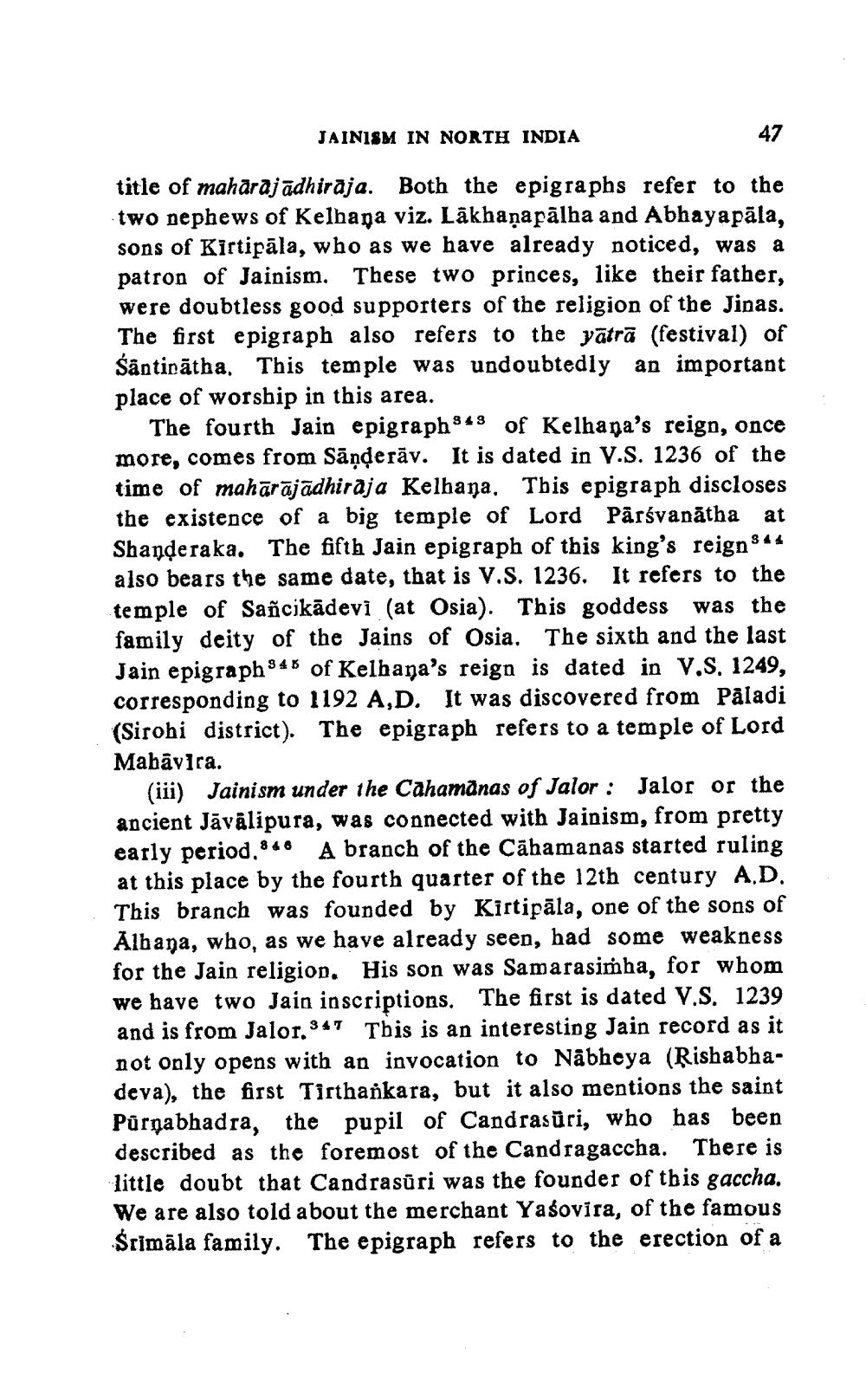________________
JAINISM IN NORTH INDIA
title of mahārājādhiraja. Both the epigraphs refer to the two nephews of Kelbapa viz. Lākhaṇapālha and Abhayapāla, sons of Kirtipāla, who as we have already noticed, was a patron of Jainism. These two princes, like their father, were doubtless good supporters of the religion of the Jinas. The first epigraph also refers to the yātrā (festival) of Śäntinātha. This temple was undoubtedly an important place of worship in this area.
The fourth Jain epigraph 843 of Kelhana's reign, once more, comes from Sāņạerāv. It is dated in V.S. 1236 of the time of mahārājādhiraja Kelhana. This epigraph discloses the existence of a big temple of Lord Pärśvanātha at Shanderaka. The fifth Jain epigraph of this king's reign 844 also bears the same date, that is V.S. 1236. It refers to the temple of Sañcikādevi (at Osia). This goddess was the family deity of the Jains of Osia. The sixth and the last Jain epigraph 348 of Kelhana's reign is dated in V.S. 1249, corresponding to 1192 A,D. It was discovered from Paladi (Sirohi district). The epigraph refers to a temple of Lord Mabāvīra.
(iii) Jainism under the Cahamānas of Jalor : Jalor or the ancient Jāvälipura, was connected with Jainism, from pretty early period.846 A branch of the Cāhamanas started ruling at this place by the fourth quarter of the 12th century A.D. This branch was founded by Kirtipāla, one of the sons of Albana, who, as we have already seen, had some weakness for the Jain religion. His son was Samarasimha, for whom we have two Jain inscriptions. The first is dated V.S. 1239 and is from Jalor.347 This is an interesting Jain record as it not only opens with an invocation to Nābheya (Rishabhadeva), the first Tirthankara, but it also mentions the saint Pūrņabhadra, the pupil of Candrasūri, who has been described as the foremost of the Candragaccha. There is little doubt that Candrasûri was the founder of this gaccha. We are also told about the merchant Yasovira, of the famous Srimāla family. The epigraph refers to the erection of a




